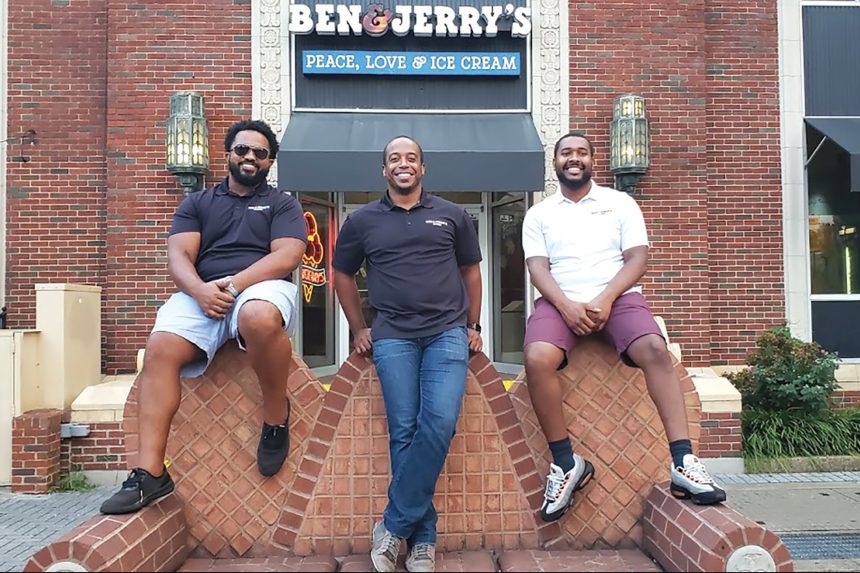When Antonio McBroom graduated from college in 2008, he was given a gift of opportunity: The Ben & Jerry’s where he’d been working had gone up for sale. He joined forces with an old friend, Eric Taylor, to buy the franchise, and then one of their marketing interns, Phillip Scotton, became their third partner. The trio formed a limited liability company called Primo Partners, and they’ve since opened 15 Ben & Jerry’s locations across eight states.
What’s the secret to their success? In a way, McBroom has been in the ice cream business since he was a child, when he bought ice pops in bulk and then sold them to customers at the bar and restaurant his grandmother ran out of her home. But at Ben & Jerry’s, the partners think far beyond the individual product. They also prioritize hiring and mentoring future leaders of color, and donate portions of their revenue to nonprofits working on racial equity, education, and voting access in the communities their shops serve. Here, McBroom shares some lessons he’s learned about how to grow something profitable — and meaningful.
Related: 3 Tasks That Will Help You Dream Big and Achieve Success
What was your first attempt at expanding?
It was definitely some trial and error. We baby-stepped expansion. Instead of opening a second store, I opened a ‘half store’ — I took an ice cream cart and put it at a shopping mall close by. I operated it just seasonally on the weekends. That gave me the experience of having two locations operating at the same time.
But as I did that, I lost focus a little bit. I had this brilliant idea that I wanted to remodel my shop. I was going to bring more concepts in, because I had a really seasonal business, and I’ve never worked so hard to lose $100,000 in my life! That experience taught me something I keep with me to this day, which is: Your main thing is to keep your main thing the main thing. For me, selling ice cream is the main thing. So rather than worry about, How do I sell more ice cream in December in a college town when all the students are gone? I should be asking, How do I sell more ice cream in my season when there’s high demand? That was a big pivot.
What changed as the business grew?
As you approach $1.5 million or so in annual revenue, you need a system. One person can’t do it all. I was in the mindset that I would just do everything. As we started approaching higher numbers, it became challenging for me to keep it all together.
That’s where we started to learn about the Entrepreneurial Operating System. The idea is that, as you scale, it is more efficient to have folks working in their strengths, with a designated role across multiple markets. Over time, instead of me sitting in all these seats, we could afford to have someone else in this particular seat.
Related: These Two Young Franchisees Have 28 MyEyelab Locations. They Did It By Embracing Weakness.
What is your advice for someone looking to open a franchise?
Be deliberate in selecting a brand that’s a good fit. Think about the values you have as an entrepreneur and as a person and look for brands that align with those values. The biggest rubs I’ve seen are when there’s kind of franchisee and franchisor misalignment on values. That’s really hard to overcome. On the business side of things, you can always vet the company and do your due diligence, but the values piece is typically deep-rooted and doesn’t change. If you’re going to invest your time — which is something they don’t make more of — be really lined up as partners with that brand.
Anything else?
I think the key piece is just the importance of dreaming big. Set the bar high for what you want to achieve as an entrepreneur and what you expect out of your business. Oftentimes you overestimate what’s possible in a year, but you underestimate what’s possible in a decade. I live by just setting big, hairy, audacious goals.
Read the full article here






